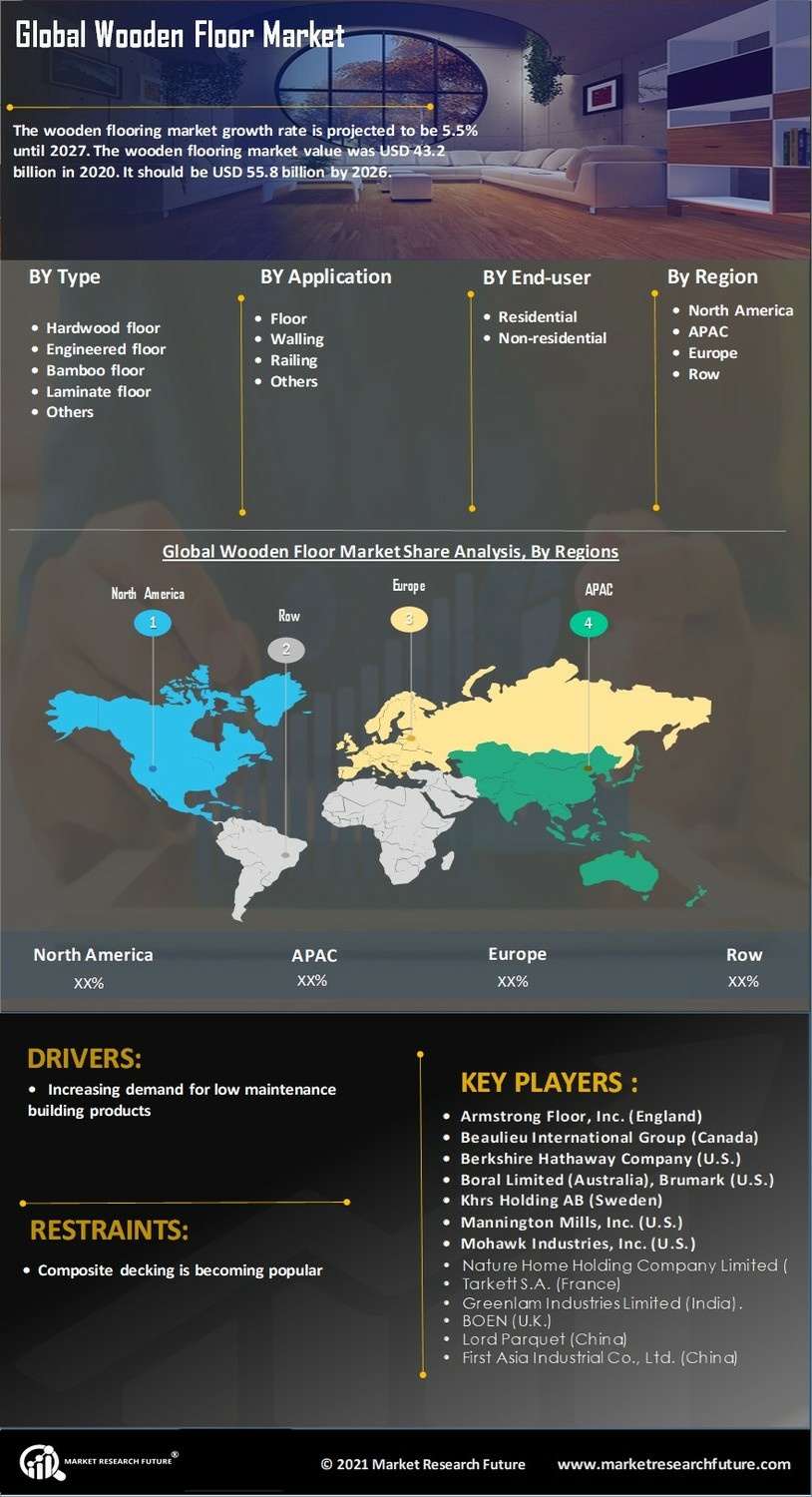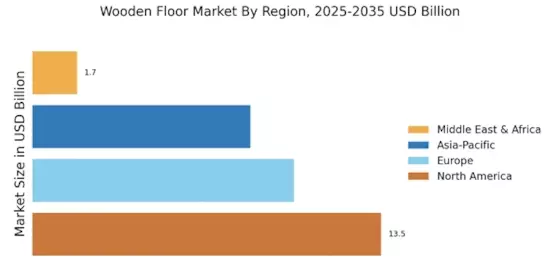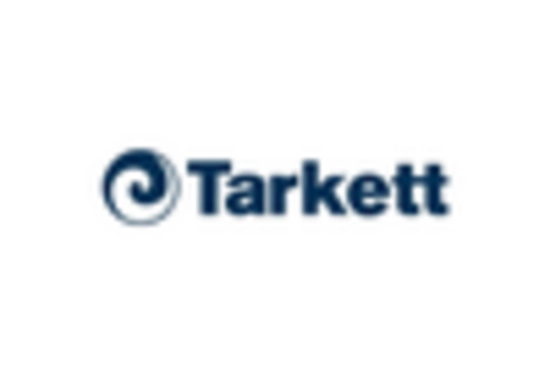Health and Wellness Trends
The growing focus on health and wellness is emerging as a significant driver in the Wooden Floor Market. Consumers are increasingly seeking materials that contribute to a healthier indoor environment, and wooden flooring is often favored for its natural properties. Unlike synthetic alternatives, wooden floors can help regulate humidity and improve air quality, making them an attractive option for health-conscious individuals. In 2025, it is expected that the demand for wooden flooring will be bolstered by this trend, as more consumers prioritize products that enhance their well-being. The Wooden Floor Market is thus likely to see a rise in the popularity of finishes and treatments that further promote health benefits, aligning with the broader wellness movement.
Sustainability and Eco-Friendliness
The increasing emphasis on sustainability and eco-friendliness is a pivotal driver in the Wooden Floor Market. Consumers are becoming more aware of the environmental impact of their choices, leading to a surge in demand for sustainably sourced wooden flooring. This trend is reflected in the growing popularity of certifications such as FSC (Forest Stewardship Council) and PEFC (Programme for the Endorsement of Forest Certification). In 2025, it is estimated that the market for sustainable wooden flooring will account for a substantial portion of overall sales, as homeowners and businesses alike prioritize eco-conscious materials. The Wooden Floor Market is thus witnessing a shift towards products that not only enhance aesthetic appeal but also align with environmental values.
Urbanization and Changing Lifestyles
Urbanization and evolving lifestyles are key factors propelling the Wooden Floor Market. As more individuals migrate to urban areas, there is a growing demand for stylish and functional flooring solutions that cater to modern living spaces. The trend towards open-concept homes and minimalist designs has led to an increased preference for wooden flooring, which is perceived as both elegant and versatile. In 2025, it is projected that urban areas will see a significant rise in the installation of wooden floors, as they complement contemporary interior designs. This shift in consumer behavior is likely to enhance the market dynamics of the Wooden Floor Market, creating opportunities for manufacturers to innovate and expand their product offerings.
Technological Innovations in Manufacturing
Technological advancements in manufacturing processes are significantly influencing the Wooden Floor Market. Innovations such as engineered wood technology and advanced finishing techniques have improved the durability and aesthetic qualities of wooden floors. For instance, the introduction of moisture-resistant engineered wood has expanded the application of wooden flooring in areas previously deemed unsuitable. Furthermore, automation in production has led to increased efficiency and reduced costs, making high-quality wooden flooring more accessible to consumers. As these technologies continue to evolve, they are likely to reshape consumer expectations and preferences within the Wooden Floor Market, driving further growth and diversification.
Rising Disposable Income and Home Renovations
The rise in disposable income across various demographics is a notable driver for the Wooden Floor Market. As consumers experience increased financial stability, they are more inclined to invest in home renovations and upgrades, including the installation of wooden flooring. This trend is particularly evident in emerging markets, where a growing middle class is seeking to enhance their living environments. In 2025, it is anticipated that the demand for premium wooden flooring options will rise, as consumers prioritize quality and aesthetics in their home improvement projects. Consequently, the Wooden Floor Market is likely to benefit from this trend, as more homeowners opt for luxurious and durable flooring solutions.


















Leave a Comment